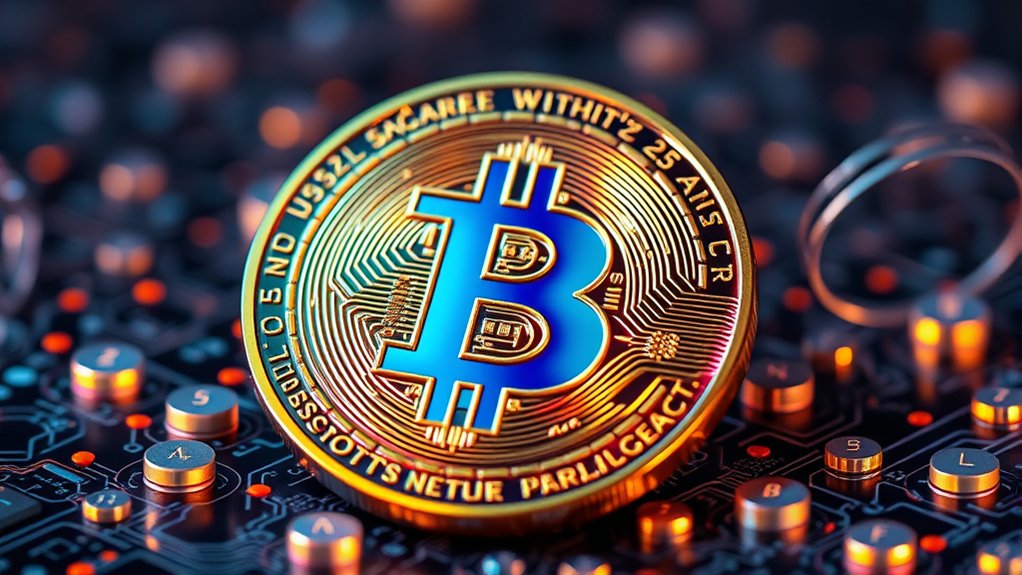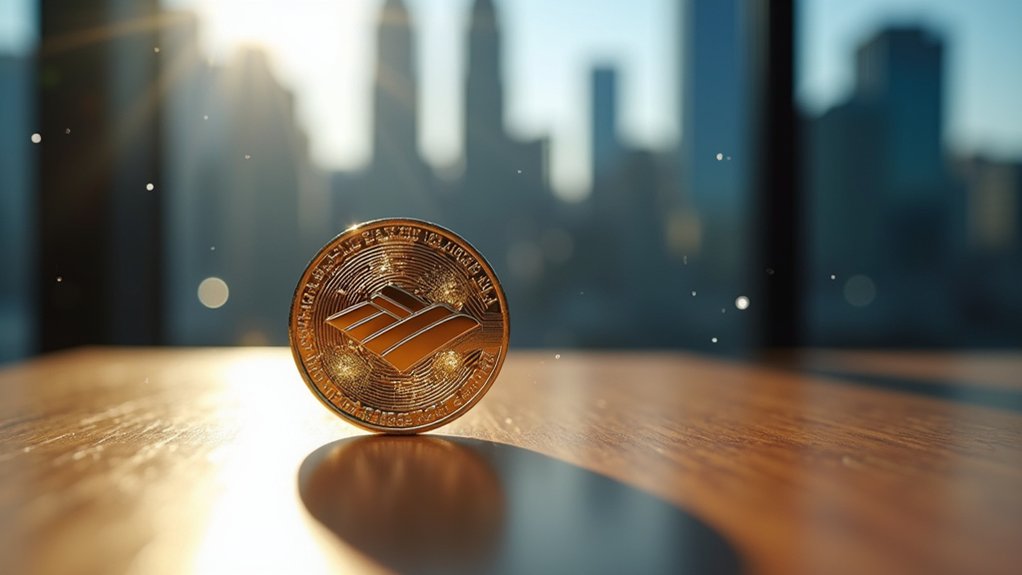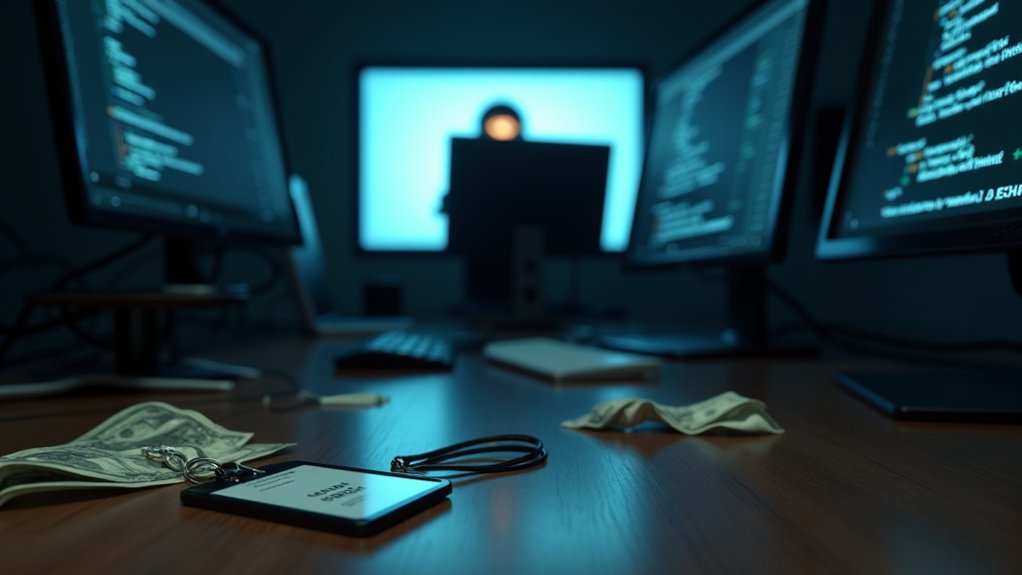Bitcoin Ordinals are turning heads in the blockchain world. They let users inscribe art and text directly onto individual satoshis, basically transforming them into unique digital assets. Unlike Ethereum NFTs, these are etched right on the Bitcoin mainnet, ensuring security and permanence. Sure, creating these gems can come with pesky fees and network congestion, but the allure of scarcity is hard to resist. Curious about how this could upend the digital asset scene? There’s more to unpack.

Bitcoin Ordinals are turning the world of digital assets upside down, and not a moment too soon. Imagine a method that inscribes data onto individual satoshis, making each one a unique digital asset. That’s the magic of Bitcoin Ordinals. It’s all about ordinal theory—assigning unique numbers to satoshis based on when they were mined. So, yes, every tiny piece of Bitcoin is now a canvas for creativity.
These inscriptions live on the Bitcoin mainnet. That’s right, folks. No side chains or fancy stuff; it’s all on-chain. And let’s not forget security. Thanks to Bitcoin’s Proof of Work consensus, these digital assets are as secure as they come. You can’t tamper with them; once it’s inscribed, it’s permanently there. It’s like carving your name into a rock.
Inscriptions thrive on the Bitcoin mainnet—secure, permanent, and untouchable, like your name carved in stone.
Now, how does this work? Each satoshi gets a unique ordinal number. Artists and creators can store images or text in the witness signature field of Bitcoin transactions. The Taproot upgrade? A game changer. It allows for larger data sizes, making those inscriptions possible. Each inscribed satoshi stands out, creating a new breed of digital assets. Unlike those Ethereum NFTs that use off-chain storage, these beauties are stored directly on the blockchain.
But wait, there’s more! Bitcoin Ordinals come with their own set of benefits. They offer robust security, guarantee data immutability, and create a sense of scarcity, which collectors love. This new type of digital asset is a fresh take on NFTs, bringing uniqueness to the Bitcoin ecosystem. Additionally, the ability to store entire data files directly on the blockchain ensures data permanence and security. The Ordinals protocol opens up new possibilities for creators and collectors alike.
Sure, transaction fees can be a pain, and network congestion is a real issue. Creating these digital wonders isn’t all sunshine and rainbows. Still, the potential for innovation is staggering. Digital art, collectibles, ownership verification—there’s a lot to unpack. Bitcoin Ordinals might just be the next big thing in the blockchain world. Buckle up!
Frequently Asked Questions
How Do I Buy Bitcoin Ordinals?
Buying Bitcoin Ordinals? Simple, yet a tad tricky.
First, grab some Bitcoin from an exchange like Coinbase.
Then, get a wallet that actually supports Ordinals—no, not just any wallet!
Next, connect to a marketplace like Magic Eden or Unisat.
Browse, find what you like, and sign those transactions.
Voilà! Just keep your private keys safe.
Oh, and remember, prices can swing wildly.
Good luck! You’re gonna need it.
What Wallets Support Bitcoin Ordinals?
When it comes to wallets for Bitcoin Ordinals, options are popping up like weeds.
There’s the Ordinals Wallet, perfect for managing those NFTs, and Xverse Wallet, which tries to be the Swiss Army knife of Bitcoin.
Then there’s Hiro Wallet, all about security and collectibles.
Unisat Wallet? It adds some unique trading flair.
Finally, Magic Eden Wallet makes buying and selling a breeze.
Pick one, and plunge into the chaos. Good luck!
Are Bitcoin Ordinals Environmentally Friendly?
Are Bitcoin Ordinals environmentally friendly? Not really.
They use the energy-guzzling Proof-of-Work protocol, making their carbon footprint comparable to a small country’s. Inscribing an ordinal requires as much energy as mining a whole Bitcoin block.
Sure, there are efforts to shift to renewable energy, but let’s be real: the environmental impact is still a huge concern.
Can I Create My Own Bitcoin Ordinals?
Absolutely, you can create your own Bitcoin Ordinals.
But hold on—it’s not a walk in the park. It’s technical and complicated.
You’ll need to get your head around Taproot technology and the ins and outs of blockchain transactions.
Sure, some platforms try to make it easier, but don’t expect a magic button.
You want unique collectibles? Fine.
Just be ready to immerse yourself in some serious techy stuff.
Good luck!
What Makes Bitcoin Ordinals Different From Ethereum NFTS?
Bitcoin Ordinals are like the rebellious cousin of Ethereum NFTs. They store data directly on the blockchain—no off-chain nonsense.
Each satoshi can hold unique info, making them one-of-a-kind. But wait, there’s more! No smart contracts needed here, just pure, unfiltered data.
Sure, Ethereum has a bigger playground with better scalability and marketplace support, but Ordinals are making waves. It’s a wild west, and the rules are still being written.





